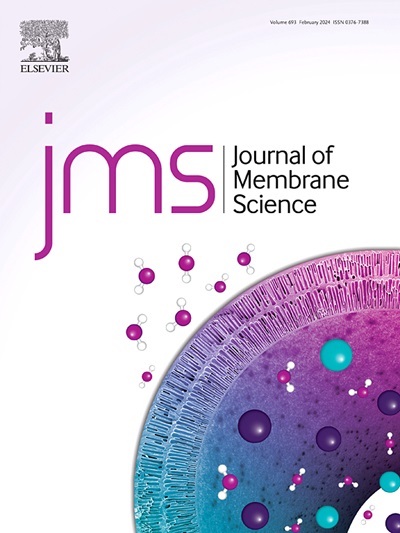Super-hydrophobic/super-oleophilic carbon nanofiber-embedded resorcinol-formaldehyde composite membrane for effective separation of water-in-oil emulsion
Abstract
A super-hydrophobic/super-oleophilic carbon nanofibers (CNFs)-embedded resorcinol-formaldehyde (RF)-activated carbon fiber (ACF) composite membrane is synthesized for the efficient removal of water from a water-oil emulsion. Chemical vapor deposition (CVD) with copper oxide (CuO) as the catalyst is used to form CNFs for the first time over an ACF-supported RF polymeric layer. The prepared CuO–CNF/RF-ACF membrane was physicochemically characterized as super-hydrophobic/super-oleophilic (water contact angle 157° and oil contact angle 0°), attributed to the high surface roughness (Ra ∼55.56 nm) and graphitic content of the CNFs. The membrane had an asymmetric internal structure with a hydrophobic CNF-decorated microporous surface, which facilitated oil to pass and rejection of water droplets from the emulsion. The dead-end separation test data indicated a flux of 426 ± 20 L/m2-h with the water removal efficiency of 99.7% and the permeate having water droplets with the size range of 37–78 nm when tested against a water-oil emulsion of 10% (v/v) comprising 700–1700 nm sized water droplets. The physicochemical characterization, including the tests under harsh conditions showed the material mechanically, thermally, and chemically stable. The method described in this study to synthesize CuO–CNF/RF-ACF membrane is facile and has a potential for scale-up.


 求助内容:
求助内容: 应助结果提醒方式:
应助结果提醒方式:


